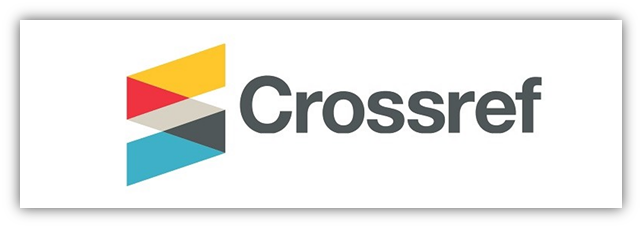Veil Type Selection Based on Perceptions of its Main Function: Its Impact on Fashion Spending
DOI:
https://doi.org/10.14421/jies.2022.3.2.%25pKeywords:
Ethics, Aesthetic, Veiling, Fashion, SpendingAbstract
As time goes by, veil (the hijab) which is originally an obligation enacted by the religious teaching, nowadays developed into a fashion trend. Veil is not just a simple fashion component with the main purpose of covering the female head and another part of body which should not be seen by the others (aurat). Certain accessories often become addition to veil (fashionable) due to the aesthetic reason making it demands a greater spending rather than not wearing any veil at all. It is a veiling phenomenon that we might call as the “Above Mecca, below Mall” style. On the other hand, internalized value as a component of VBN (Value-Belief-Norm) theory might be more dominant in affecting her subjective norm and therefore translated into her perception that veiling is an obligation of religious teaching which she must obey rather than the surrounding external environment such as trends among her peer groups or workplace rules. Our raw data was collected from 150 female students divided into 3 groups; veil weares type-1 (sharia veil), type-2 (fashionable veil) and non (non-veil) wearers, from 5 universities in Padang City, West Sumatra Province. The analysis was done in two sequential steps. Firstly, we revealed which one among the two concepts is the most prioritized and converted it into a score using an important variable named perception using AHP (Analytical Hierarchical Process) instrument. As the second step, multinomial logit model was used as the first-stage of 2-SLS regression where the perception score is one of several dependent variables, then an outcome prediction (what) was used at the second instrumented stage on veil type wearers. The study found that veil type-1 users have smaller fashion spending allocation rather than the two other sample groups. This indicates that marketers should design their strategies keeping in mind that female college students consumers at Padang city are influenced by significant others when making their purchasing decisions
Downloads
 Abstract viewed: 230 times
|
Abstract viewed: 230 times
|
 PDF downloaded = 0 times
PDF downloaded = 0 times
References
Abaza, Mona. 2007. Shifting landscapes of fashion in contemporary Egypt. Fashion Theory 11, 2/3:281–98.
Abdurraqib, S. 2006. “Hijab scenes: Muslim women, migration, and hijab in immigrant Muslim literature”. MELUS 31 (4), 55-70.
Ahmad, F. 2008. Beyond the hijab as lodestone. Journal of Feminist Studies in Religion 24 (1), 99-101.
Afshar, H. 2008. “Can I see your hair? Choice, agency and attitudes: The dilemma of faith and feminism for Muslim women who cover”. Ethic and Racial Studies 31 (2): 411-427.
Al-Saji, A. 2010. “The racialization of Muslim veils: A philosophical analysis”. Philosophy and Social Criticism 36 (8), 875-902.
Ali, S. 2005. “Why here, why now? Young Muslim women wearing hijab”. The Muslim World 95, 515-530.
Amir-Moazami, Schirin. 2005. Muslim challenges to the secular consensus: A German case study. Journal of Contemporary European Studies 13, 3:267–86.
Barnard, Malcolm, ed. 2007. Fashion theory: A reader. London: Routledge.
Baumann, Gerd. 1999. The multicultural riddle: Rethinking national, ethnic and religious identities. New York: Routledge.
Bayram, S. 2009. “Reporting Hijab in Turkey: Shifts in the pro- and anti-ban discourses”. Turkish Studies 10 (4), 511-538.
Beckmann Al Wazni, A. 2015. “Muslim women in America and hijab: A study of empowerment, feminist identity, and body image”. National Association of Social Workers 60 (4), 325- 333.
Berik, G. 1987. Women carpet weavers in rural Turkey: Pattern of employment, earnings and status. Geneva: International Labor Organization.
Boyar, E. and K. Fleet 2010. A social history of Ottoman Istanbul. Cambridge: Cambridge University Press.
Byng, M. 2010. “Symbolically Muslim: Media, hijab, and the West”. Critical Sociology 36 (1), 109-129.
Brouce, E. 2016. Islamic geometric design. London: Thames and Hudson.
Brunig, B. and F. Fleishmann. 2015. “Understanding the veiling of Muslim Women in the Netherlands”. Journal for Scientific Study of Religion 54 (10) 20-27.
Carle, R. 2004. “Hijab and the limits of French secular republicanism”. Society Abroad September/October, 63-8.
Certeau, Michel de. 1984. The practice of everyday life. Berkeley: University of California Press.
Deeb, Lara. 2006. An enchanted modern: Gender and public piety in Shi’I Lebanon. Princeton: Princeton University Press.
Dunand Zimmerman, D. 2015. “Young Arab Muslim women’s agency challenging Western feminism”. Journal of Women and Social Work 30 (2), 145-157.
El-Guindi, Fadwa. 1981. Veiling infitah with Muslim ethic: Egypt’s contemporary Islamic movement. Social Problems 28, 4:465–85.
Fuente, Eduardo de la. 2000. Sociology and aesthetics, European Journal of Social Theory 3, 2:235–47.
Mahmood, Saba. 2005. Politics of Piety: The Islamic Revival and the Feminist Subject. Princeton, NJ: Princeton University Press.
Mahmud, Y. and V. Swami. 2010. “The influence of the hijab (Islamic head-cover) on perceptions of women’s attractiveness and intelligence”. Body Image 7, 90-93.
Maksudyan, N. 2014. Women and the City, Women in the City: A Gendered Perspective on Ottoman Urban History. New York: Berghahn Books.
McLeod, Arlene. 1991. Accommodating protest: Working women, the new veiling, and changes in Cairo. New York: Columbia University Press.
Melman, Billie. 1992. Women’s Orients: English Women and the Middle East, 1718-1918: Sexuality, Religion, and Work. Ann Arbor: University of Michigan Press.
Mitchell, W. J. T. 2002. Showing seeing: A critique of visual culture. Journal of Visual Culture1, 2:165–81.
Moors, Annelies. 2007. Fashionable Muslims: Notions of self, religion and society in San’a. Fashion Theory 11, 2/3:319–47
Nereid, C. 2011. “Kemalism on the catwall: The Turkish Hat Law of 1925”. Journal of Social History 44 (3), 707-728.
Nevra Seggie, F. 2011. Religion and the state in Turkish universities: The headscarf ban. New York. Palgrave Macmillan.
Ozyegin, G. 2001. Untidy gender: Domestic service in Turkey. Philadelphia. Temple University Press.
Peterson, Samiha. 2000. The Liberation of Women; and The New Woman: two documents in the History of Egyptian Feminism. Cario: American University in Cario Press.
Peres, R. 2012. Headscarf: The day Turkey stood still. UK: Garnet Publishing.
Price, Daniel. 1999. Islamic Political Culture, Democracy, and Human Rights: A Comparative Study. Westport, CT: Praeger Publishers.
Qasimi, Noor al-. 2010. Immodest Modesty: Accommodating Dissent and the ‘Abaya-AsFashion in the Arab Gulf States. JMEWS: Journal of Middle East Women’s Studies 6.1 (Winter): 46-74.
Rahmath, S., L. Chambers, and P. Wakewich. 2016. “Asserting citizenship: Muslim women’s experience with the hijab in Canada”. Women’s Studies International Forum 58, 34-40.
Ruby, T. F. 2005. “Listening to the voices of hijab”. Women’s Studies International Forum 29, 54-66.
Sancar, A. 2007. Ottoman women: Myth and reality. New Jersey: The Light Publishing.
Saroglou, V., B. Lamkaddem, M. Van Pachterbeke, and C. Buxant. 2009. “Host society’s dislike of the Islamic veil: The role of subtle prejudice, values, and religion ”. International Journal of Intercultural Relations 33, 419-428.
Sayan-Cengiz, F. 2016. Beyond the headscarf culture in Turkey’s retail sector. New York: Palgrave Macmillan.
Scott, Joan Wallach. 2007. The politics of the veil. Princeton: Princeton University Press.
Sloan, L. 2011. “Women’s oppression or choice? One American’s view on wearing the hijab”.
Journal of Women and Social Work 26 (2), 218-221.
Smith-Hefner, Nancy J. 2007. Javanese women and the veil in post-Soeharto Indonesia. Journal of Asian Studies 66, 2:389–420.
Tarlo, E. 2007. “Hijab in London: Metamorphosis, resonance, and effects”. Journal of Material Culture 12 (2):131-156.
Tarlo, Emma. 2010. Visibly Muslim: Fashion, Politics, Faith. London: Bloomsbury Academic Press.
Wayland, S.V. 1997. “Religious expression in public schools: kirpans in Canada, hijab in France”.
Ethnic and Racial Studies 20 (3), 545-560
Winter, Bronwyn. 2006. The Great Hijab Coverup. Off Our Backs: A Women’s Newsjournal 36.3: 38-40.
Wilson, Elisabeth. 1985. Adorned in dreams: Fashion and modernity. London: Virago Press.
Wong, N.Y. and Ahuvia, A.C. (1998) Personal Taste and Family Face Luxury Consumption in Confucian and Western Societies. Psychology and Marketing Vol. 15(5):423– 441
Zwick, Detlev, Samuel K. Bonsu, and Aron Darmody. 2008. Putting consumers to work: “Co- creation” and new marketing govern-mentality. Journal of Consumer Culture 8, 2:163–96
Published
How to Cite
Issue
Section
License
Copyright (c) 2023 Wahyu Annisa Fitri, Seppi Mustion, Putri Diani Sausan

This work is licensed under a Creative Commons Attribution-ShareAlike 4.0 International License.
Authors who publish with this journal agree to the following terms:
1.Authors retain copyright and grant the journal right of first publication with the work simultaneously licensed under a Creative Commons Attribution License that allows others to share the work with an acknowledgement of the work's authorship and initial publication in this journal.
2. Authors are able to enter into separate, additional contractual arrangements for the non-exclusive distribution of the journal's published version of the work (e.g., post it to an institutional repository or publish it in a book), with an acknowledgement of its initial publication in this journal.
3. Authors are permitted and encouraged to post their work online (e.g., in institutional repositories or on their website) prior to and during the submission process, as it can lead to productive exchanges, as well as earlier and greater citation of published work (See The Effect of Open Access).









 This work is licensed under a
This work is licensed under a 